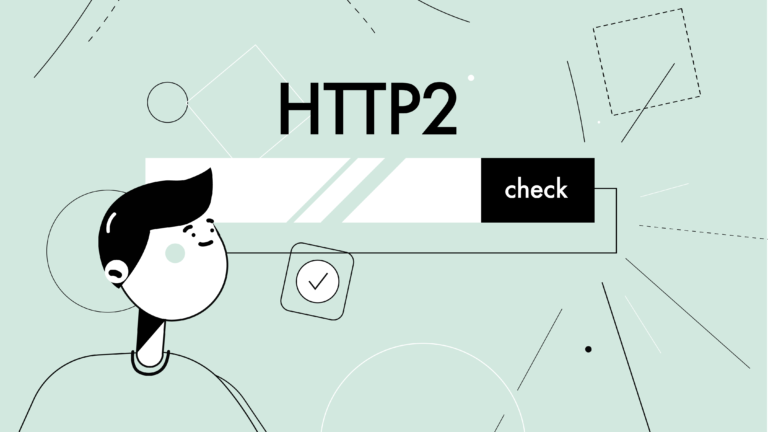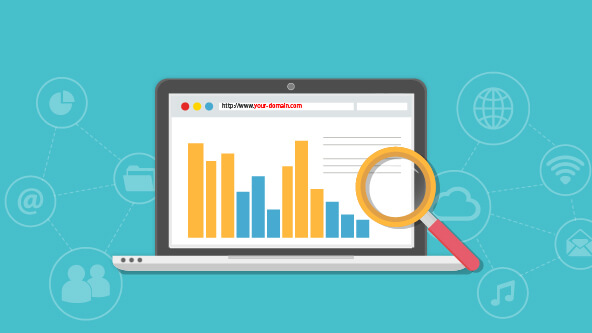Analysis of traffic drop in Google search
Imagine: you open the Google search console and suddenly you see that search traffic has dropped drastically. Such problems can arise at any time: a year after the launch of the site, after 5 or 10 years. This is not always a cause for concern, but to know when to worry, you need to understand the cause of the drop in traffic.

All sites experience ups and downs, that’s the nature of SEO. Being able to recognize a real drop in traffic, rather than scanning errors or seasonal fluctuations, is an important first step. The drop in traffic can be abrupt or gradual, traffic can recover on its own or remain low until the site owner makes a change.
Reasons for the drop in search traffic
Of course, first of all, it is important to know what causes attendance to drop. The most common causes:
- Technical problems with the site. These are errors that prevent your site from being crawled, indexed or shown to your visitors by search engines. Such problems include a ban on indexing in the robots.txt file, a ban on indexing for individual pages, problems with the server. Sometimes it is enough to move the site to a quality hosting. Technical problems can also include incorrect links, slow page load speeds, errors in the code.
- Security issues. Google gives high priority to security, so if a website is not properly protected from DDoS attacks and other threats, you will not get traffic from search engines. Google will warn your users not to visit your site, which, of course, will result in less search traffic.
- Search Engine Sanctions. If your website violates search engine rules, it may get filtered and disappear from search results altogether. The reasons can be different, including borrowed content, overspamming text with keys, behavioral factor scam and black SEO, aggressive advertising, selling links in large quantities. Check Search Console for messages indicating filters.
- Algorithm changes. Google is constantly improving its algorithm through small and major updates. As a result of such changes can be a change in traffic, and in either direction – you can both lose traffic and increase it. In recent years, search engines have made many changes to their algorithms to improve search quality and provide users with better content.
- Changing audience interests. Sometimes your visitors change their search behavior because of one trend or another. These changes are usually seasonal and occur throughout the year. These are reasons beyond your control that cannot be influenced. Sometimes they are irreversible: for example, 10 years ago the request “DVD-player” was popular, but today no one buys this outdated equipment.
- Competition from other sites. If new players enter the market offering similar or better content than yours, it can affect search traffic. If competitors are ranking better for keywords than your resource, this can also affect search traffic.
- Poor quality backlinks. Bad backlinks are links from other websites that link to your website and can hurt search traffic. For example, they are links from spam sites or links from resources not related to your niche.

General recommendations for dealing with these causes include tips such as:
- Be sure to check your site regularly for technical problems and fix them. Use tools like Google Search Console to find and fix problems.
- If the content is outdated and no longer relevant to your audience, be sure to check and update it regularly to make sure it is still relevant. You can also update and republish old content to keep it up to date.
- Keep an eye on your competitors and analyze their content, keywords and rankings. Customize content and SEO strategies to increase the effectiveness of your resource.
- Check backlinks regularly and remove any bad links. You can use tools such as Google Search Console and Ahrefs to check the quality of backlinks.
Remember that SEO is an ongoing process, and it’s important to stay on top of the latest trends and developments so that your site stays relevant and generates more traffic.
How to analyze the drop in search traffic: hypotheses
The best way to analyze traffic is to use Google Search Console reports. The console offers a wealth of information that can be used for analysis. The first thing to do is to make sure that the drop in traffic really happens and it’s not just seasonal fluctuations.

Analyze 12-16 month reports to identify problems. It is important to choose such a period to estimate attendance in different months and years. For example, in April 2021, the product page attracted 1,000 visitors from Google, 700 in July, and 950 in October. In 2022, the situation was as follows:
- April – 970 users;
- July – 710 visitors;
- October – 930.
In this case, do not consider fluctuations in the attendance chart as a fall. There is a seasonal trend, when during the summer vacation season attendance drops a little, but returns to normal values in the fall.
A more in-depth analysis for the selected period will help you find out which pages have lost traffic, and which on the contrary began to attract more visitors. When comparing reports by month or year, it is advisable to choose the same periods – months or weeks.
You can analyze different types of traffic:
- By user device. For example, in one year you lost 20% of your traffic from mobile devices. Once you see this in the report, you can start optimizing pages for smartphones, increasing the loading speed.
- Nationally. If your target audience is in the U.S., but traffic from that country is dropping, it’s time to change your content strategy.
- By direction. If you sell different products, the drop in traffic may affect only one category or several at once. For example, in the fall and winter, it seems logical to decrease the interest of the audience in summer shoes and clothing. However, if the traffic dropped in the high season, it is a reason to think about other reasons.
When you find a drop in traffic and understand exactly when it happened, it’s important to find out if the site’s visibility in search results has dropped.
Traffic and visibility in search engines
Visibility is a measure of how visible a website is in search results when users enter queries into the search bar. Visibility shows how visible the resource is based on the entire set of keywords.
You should find out if there is a correlation between traffic and visibility. Sometimes visibility goes up or down and traffic stays the same. There may be a drop in traffic, but the visibility remains the same.

If, along with the traffic decreased visibility, probably the site fell out of the top search results, and its place was taken by a competitor. From this you can already conclude whether the problem is focused on a few pages and keywords, or rather the whole site is not working well. If a very important keyword with a high conversion rate has dropped from 1st to 3rd position, it can lead to a significant reduction in traffic. Then you should analyze in more detail why your competitors have overtaken your site in search results, and take appropriate action.
If visibility has remained the same and traffic has dropped, the problem is probably in the snippet. You could add keywords in the title and description, but did not care about the attractiveness of the text to users. Sometimes the information is simply outdated: the snippet specifies shoes from the 2017 collection, and it’s already the beginning of 2023. Even if your site is in the top 3 of search results, users can scroll through the page and click on a competitor’s snippet that remembered to update information or added text on a relevant topic.
Your loss may not be due to something you did wrong. Perhaps a competitor has improved their content or gotten more authoritative links. If you observe a loss of traffic on certain pages, we recommend that you look through the search results and pay attention to pages with higher positions.
How do industry trends affect attendance?
Use Google Trends to analyze a niche. Sometimes you do everything right: the site is optimized, pages load quickly, backlinks are quality and added regularly, but attendance is still falling. The reason for this could be a general decline in interest in the industry in which you work.
A fresh example of this decline is the abandonment of masks after the COVID-19 pandemic. For 2 years it was impossible to appear almost anywhere without a mask, so people regularly bought them, and among young people were popular products with prints. When the restrictions were lifted, the demand for masks plummeted, and all online stores felt the drop in traffic in the “masks” category.

Sometimes a new product appears on the market, which almost completely replaces the old products. As an example, we can mention the emergence of smartphones, which quickly occupied a large part of the cell phone market. People stopped searching in search engines for button phones, and traffic for related queries went down sharply.
Seasonality also affects traffic. Use Search Console Insights to check the seasonality of keywords. This tool also shows you countries, regions, and individual cities with high interest in your field. This is a tool that users can use to compare search volume patterns across specific regions, categories, and time frames.
Search Console Insights will show you when a search phrase is most popular during the year. It’s very helpful to be able to see when your search traffic usually peaks and when you will have a drop in traffic.
By using seasonality information as part of your SEO strategy, you can gain a competitive advantage. Publishing and updating information based on when users start searching on a topic ensures that you have fresh content.Google provides webmasters with plenty of tools to help detect a drop in traffic and figure out the reasons behind it. These include Google Search Console, Google Analytics, and Google Trends. Search Console Insights is another useful tool to give you information on how users are finding your content. And if you’re looking for a reliable hosting service with a user-friendly website builder, choose one of our tariff plans.








